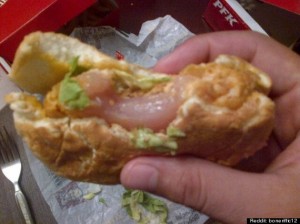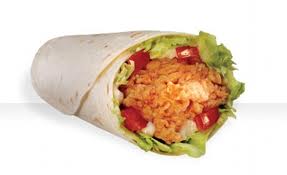Why are production standards marketed in grocery stores, but microbiological safety isn’t?
As reported by William Neuman of the New York Times, “shoppers in the supermarket today can buy chicken free of nearly everything but  adjectives. It comes free-range, cage-free, antibiotic-free, raised on vegetarian feed, organic, even air-chilled.
adjectives. It comes free-range, cage-free, antibiotic-free, raised on vegetarian feed, organic, even air-chilled.
“Coming soon: stress-free?
“Two premium chicken producers, Bell & Evans in Pennsylvania and Mary’s Chickens in California, are preparing to switch to a system of killing their birds that they consider more humane. The new system uses carbon dioxide gas to gently render the birds unconscious before they are hung by their feet to have their throats slit, sparing them the potential suffering associated with conventional slaughter methods.”
With so many options, why isn’t someone marketing microbiologically safer chicken – chicken with fewer of the bugs that make people barf?
 With the slaughter system, David Pitman, whose family owns Mary’s Chickens, said,
With the slaughter system, David Pitman, whose family owns Mary’s Chickens, said,
“Most of the time, people don’t want to think about how the animal was killed.”
And retailers will say, you can’t market food safety because that would imply other foods are unsafe.
But as a shopper, I want to reward companies that pay attention to microbial food safety issues, and shun companies that are sloppy.
Americans are good at marketing, so why not get the Mad Men geniuses on the case and figure out how to brag about microbiologically safer food.
Anglia Autoflow, the company that is building the knock-out systems for the two processors, calls the process “controlled atmosphere stunning,” but Mr. Pitman said his company was considering the phrase “sedation stunning” for use on its packages. Also on the short-list: “humanely slaughtered,” “humanely processed” or “humanely handled.”
The trick, he said, is to communicate the goal of the new system, which is to ensure that the birds “not have any extra pain or discomfort in the last few minutes of their lives.”
Temple Grandin, a professor of animal science at Colorado State University and a prominent livestock expert, consulted with Bell & Evans as the company worked with Anglia to design its system. She said it was better because the chickens were not aware of what was happening to them. “Birds don’t like being hung upside down,” Dr. Grandin said. “They get really stressed out by that.”
Scott Sechler, the owner of Bell & Evans, said the system was designed to put birds to sleep gently, in the same way that a person undergoes  anesthesia before surgery.
anesthesia before surgery.
To evoke that image, he wants to put the words “slow induction anesthesia” on his packages and advertising, which already tell customers that the birds are raised in roomy conditions with natural light and given feed free of antibiotics or animal byproducts. Customers who want to know more will be able to go to the company’s Web site.
 She spent nearly a month in hospital as E. coli bacteria attacked her kidneys.
She spent nearly a month in hospital as E. coli bacteria attacked her kidneys. deafening.
deafening.





 at Villawood, in Sydney’s west.
at Villawood, in Sydney’s west. KFC has vowed to appeal the ruling.
KFC has vowed to appeal the ruling. adjectives. It comes free-range, cage-free, antibiotic-free, raised on vegetarian feed, organic, even air-chilled.
adjectives. It comes free-range, cage-free, antibiotic-free, raised on vegetarian feed, organic, even air-chilled. With the slaughter system, David Pitman, whose family owns Mary’s Chickens, said,
With the slaughter system, David Pitman, whose family owns Mary’s Chickens, said, I’d eat the stuff once a year, and immediately regret the indulgence.
I’d eat the stuff once a year, and immediately regret the indulgence..jpg) ”breading table” where chicken is floured before being cooked, and then onto the floor. ”He was like, ‘Oh, don’t worry’ … look, it’s only flour,’ and he grabbed it and he chucked it back in.”
”breading table” where chicken is floured before being cooked, and then onto the floor. ”He was like, ‘Oh, don’t worry’ … look, it’s only flour,’ and he grabbed it and he chucked it back in.”